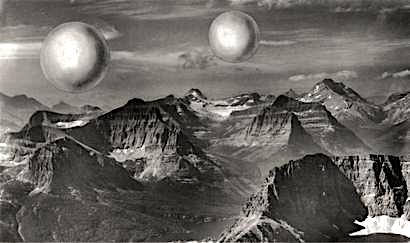
In 1960 the American architect, author and inventor Buckminster Fuller proposed a structure for airborne spheres, which he named Cloud Nine. The stucture was based on the design of the geodesic dome, which Fuller had previously popularized. A geodesic dome is a hemispherical thin-shell structure based on a network of great circles on the surface of a sphere or a hemisphere. The circles intersect to form triangular elements, which distribute the structural stress throughout the sphere. Therefore as the sphere gets bigger, the stucture only gets stronger. Also the volume of the sphere grows much faster than the mass of the enclosing structure itself, which led Fuller to suggest that a large enough sphere could become airborne, if the air inside it was heated just slightly higher than the ambient temperature of its surroundings. Fuller calculated that such a balloon could lift a considerable mass, and hence these floating structures could be even used as inhabitats.
